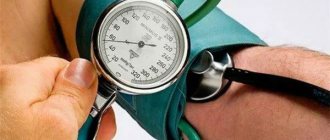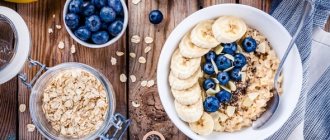Tablets to lower blood sugar levels.
September 28, 2021
8629
4.6
5
Content
- Types of diabetes
- Causes of type 2 diabetes mellitus
- How to choose diabetes pills
- Top 5 diabetes pills
- Diabetes
- Siofor
- Januvia
- NovoNorm
- Glucobay
To treat diabetes, it is not necessary to regularly inject insulin. In many cases, it is enough to simply lead a healthy lifestyle and take special medications. Let's figure out what types of diabetes there are and what pills doctors prescribe.
Diabetes mellitus is not one specific disease, but a group of diseases in which the metabolism in the body is disrupted (in particular, carbohydrate metabolism suffers).
Types of diabetes
There are several types of diabetes.
- Diabetes mellitus type 1.
Usually this disease develops at a young age (up to 30-35 years). A feature of this type of diabetes is insulin dependence. Symptoms of type 1 diabetes: increased appetite, but weight loss against this background, frequent urination, constant thirst. With this type of diabetes, carbohydrate metabolism is impaired, and the pancreas produces too little insulin. - Diabetes mellitus type 2.
This diabetes is non-insulin dependent. Most often, the disease develops in old age. Type 2 diabetes is often inherited. This kind of diabetes requires a special diet, physical activity (moderate) and strict adherence to the advice of your doctor. - Gestational diabetes.
This type of diabetes occurs in pregnant women and usually goes away after childbirth. Sometimes gestational diabetes can negatively affect the fetus or recur after a few years. - MODY-diabetes.
This kind of diabetes is rare; the disease occurs in 5% of diabetics. Develops at an early age. In MODY diabetes, a person has a very low need for insulin. The disease is considered an intermediate stage because it has features of the first two types of diabetes.
Treatment of diabetes depends on what caused it, how severe the disease is, what chronic diseases the person has, and what his age is. Tablets for diabetes, taking into account all the above factors, can only be prescribed by a doctor.
General principles of nutrition for diabetics
Changing your diet is one of the cornerstones of diabetes treatment. Compliance with the rules allows the patient to manage the disease, which is the best prevention of the development of severe complications. You can develop a dietary menu yourself based on the therapeutic diet “Table No. 9” or consult a nutritionist.
The basic principles of nutrition are:
- eliminating simple carbohydrates that increase glucose levels (primarily various sweets and sugary drinks);
- compliance with the diet (5–6 times a day with 3–4 hour intervals) and drinking regime (1.5–2 liters/day);
- reducing portions;
- control of caloric content of dishes and glycemic index of foods;
- limiting animal proteins and complex carbohydrates;
- refusal to prepare dishes using the culinary method of frying;
- limiting salt and salty foods;
- consumption of foods that lower sugar.
- Keeping a Diabetes Diary.
Recommended daily nutrient ratio: carbohydrates – 45%, proteins – 20%, fats – 35%. Total calorie content – no more than 2200-2500 kcal.
Causes of type 2 diabetes mellitus
There are certain factors that influence the occurrence of diabetes.
Some metabolic disorders in the body can increase the risk of disease. Among them:
- presence of type 2 diabetes in close relatives;
- obesity or overweight;
- poor nutrition, an abundance of fatty or too carbohydrate foods in the diet;
- lack of physical activity, sedentary lifestyle;
- age factor;
- high blood pressure;
- impaired glucose tolerance (slight increase in blood sugar);
- gestational diabetes in the past;
- malnutrition during pregnancy.
In recent decades, due to changes in diet and physical activity, urbanization and the fast pace of life, the number of people with type 2 diabetes has increased sharply.
Types 1 and 2 diabetes: differences
Photos from open sources
How to avoid diabetes, 13 ways
This leaves many wondering how to minimize the risks of developing diabetes. Prevention is the best way to preserve both your own health and that of your loved ones. This aspect is especially important given that many people are predisposed to the disease. This means that sugar is high, but has not yet reached the level when the patient is diagnosed with diabetes.
Prevention of diabetes
Seventy percent of people with a predisposition to this disease may develop type 2 diabetes. However, by taking certain steps, this can be avoided. It will not be possible to influence age, genes, or lifestyle prior to the moment when a person decides to pay increased attention to his health, but everyone can eliminate certain bad habits and acquire useful ones that help minimize the risks of developing the disease.
#1 Avoid refined carbohydrates and sugar
Reviewing your diet is the first step towards preventing diabetes. Foods in which sugar and refined carbohydrates are present in large quantities can give a significant impetus to the development of the disease. Sugar molecules formed as a result of the breakdown of such products enter directly into the circulatory system. This causes a sharp increase in blood sugar levels and the synthesis of insulin, a hormone produced by the pancreas that performs a “transport” function, as a result of which sugar from the blood enters other cells.
Insulin is not accepted by the body of people with a predisposition to diabetes, and, instead of being distributed, sugar obtained from “junk” food remains entirely in the blood. The pancreas, trying to restore balance, begins to produce insulin even more actively. This does not lead to normalization of sugar, but, on the contrary, increases it even more. In addition, the amount of insulin begins to go off scale. Such a scheme becomes the impetus for the development of diabetes.
The existence of a connection between the consumption of foods rich in refined carbohydrates and sugar and an increase in the likelihood of illness has been proven in various studies. If you refrain from eating such foods, this risk is significantly minimized. Of the thirty-seven studies conducted to date, all have confirmed that people who eat fast carbohydrates are forty percent more likely to develop diabetes.
#2 Exercise regularly
Physical activity increases the sensitivity of cells to insulin, which allows the pancreas not to produce this hormone in large quantities, and, therefore, maintaining sugar levels becomes much easier. Doesn't necessarily become a professional athlete. The main thing is to simply do various exercises. Scientists have found that high-intensity exercise increases the body's sensitivity to insulin by 85 percent, and moderate-intensity exercise increases the body's sensitivity to insulin by 51 percent. The effect, unfortunately, only lasts on training days.
Engaging in various types of physical activity lowers sugar levels not only in people predisposed to diabetes, but also in obese people. Strength, high-intensity and aerobic training gives this result. If you make sports a part of your life, insulin will begin to be produced without any disturbances. This result can be achieved by increasing the number of calories burned during exercise to two thousand per week. To make this easier to achieve, you should choose exactly the type of activity that you like most.
#3 Make water the main source of fluid intake
You should not get carried away with various drinks. They, unlike ordinary drinking water, especially store-bought ones, contain sugar, preservatives and other additives not always known to the buyer. Drinking carbonated drinks increases the likelihood of developing LADA, that is, type 1 diabetes, which affects people 18 years of age and older. It begins to develop in childhood, but without any pronounced symptoms and rather slowly, requiring complex treatment.
The largest study on this aspect covered about 2,800 people. In people who drank two bottles of carbonated sweet juices per day, the risk of developing type 2 diabetes increased by 20 percent, and type 1 diabetes by 99 percent. It should also be taken into account that fruit juices can also become a provoking factor. Water has a completely different effect on the body.
Unlike other sweet and carbonated liquids, water has many positive qualities. It not only quenches thirst, but allows you to keep insulin and sugar under control. A similar effect was revealed experimentally when a group of people suffering from excess weight, instead of soda, were given plain water to drink during a diet. All participants noted not only a decrease in sugar levels, but also an increase in insulin sensitivity.
No. 4 Bring your weight to the optimal level
Diabetes affects not only people with excess body weight, but they make up the vast majority. And if there is a predisposition to the disease, then fat accumulates around the liver and abdominal cavity. Its excess becomes the main reason that the body becomes less sensitive to insulin, which increases the risk of diabetes.
Considering this fact, even a few lost kilograms cause significant improvements and disease prevention. The more weight lost, the better. In one experiment with about a thousand participants, it was found that losing one kilogram of weight reduced the risk of developing the disease by 16%. The maximum achievement that was identified during the study was an impressive 96%.
To get rid of excess body weight, you should adhere to a diet. You can follow a Mediterranean, vegetarian or any other diet that does not harm your health. It is important not only to lose weight, but also to maintain the results achieved. Along with the returning kilograms, old problems will make themselves known when the concentration of both insulin and sugar in the body increases again.
#5 Quit smoking
Smokers are at risk of developing many health problems, including type 2 diabetes. This applies to both active and passive smoking, that is, inhalation of tobacco smoke. As studies have shown, covering over a million smokers, the risk of disease in people who smoke a moderate number of cigarettes per day increases by 44, and from 20 or more cigarettes - by 61%.
There is also evidence of how giving up this bad habit affects a decrease in the manifestation of the disease in a middle-aged person. 5 years after stopping smoking, the likelihood of developing the disease decreases by 13%, and after 20 years this figure does not exceed that of people who have never smoked.
It is necessary to understand that quitting smoking will have a positive effect on both normal and overweight people. A person who quits a bad habit and then gains weight will always have much lower risks than if he continued to smoke.
#6 Try a low-carb diet
A low-carbohydrate diet is also called a ketogenic diet. It is the most effective and efficient for those who want to lose weight without any consequences or harm, since they should worry about their general condition, and not just about high sugar and insulin. This diet is recommended as a preventive measure both due to its good results in losing kilograms and because it reduces insulin resistance.
A three-month experiment during which people ate a low-carbohydrate diet found a 12% decrease in sugar levels and a 50% decrease in insulin levels compared to those on a low-fat diet for the same period of time. The indicators of the second group turned out to be much more modest and amounted to a 1% drop in sugar levels and a 19% drop in insulin levels. This best demonstrates the benefits of a low-carb diet. An artificially created carbohydrate deficiency allows you to maintain sugar levels both before and after meals almost the same. Thus, the pancreas will not produce large amounts of insulin, which is a prevention of diabetes.
This is not the only experiment on the relationship between carbohydrates and the concentration of insulin and sugar in the body. Another study showed that following a ketogenic diet in people prone to diabetes, blood sugar dropped to 92 mmol/L, which is down to normal, although it was previously at 118. Other health improvements were noted, as well as weight loss.
#7 Eat small portions
This applies to both dietary and regular nutrition. Portions of food placed on a plate should be small. This is fundamentally important for overweight people. The more food you eat at a time, the higher your sugar and insulin rise. And if you eat food in small portions, you can avoid sudden surges.
The study lasted for two whole years, which proved that the volume of food intake affects the likelihood of developing diabetes. An experiment found a 46% reduction in the risk of diabetes after switching from large to small portions. If you don’t change anything in your diet, you won’t have to count on such changes. Another experiment proved that thanks to small portions, after three months you can notice a difference in the level of both insulin and blood.
#8 Switch from a sedentary to an active lifestyle
You can’t practically stay still and prevent the onset of diabetes. Lack of movement, as scientists have found out, plays an important role in the development of the disease. There were about 47 different studies, but all of them showed a connection between a sedentary lifestyle and an increase in risk factors by 91%.
Of course, changing this is a completely feasible task. It’s enough to just get up and walk around once an hour. The main thing is to overcome your own habits, which, as has been proven, is very difficult. Young people who took part in a year-long lifestyle change experiment returned to a similar lifestyle after the study ended.
The power of habits is sometimes stronger than even the best intentions. And to avoid a “breakdown”, you should not overpower yourself, but rather set realistically achievable goals. If it is difficult to get up from your desk every hour and walk around your study or office, then walking up the stairs rather than taking the elevator, or talking on the phone while standing rather than sitting is much easier.
#9 Eat fiber-rich foods
High-fiber foods are healthy and help maintain both insulin and sugar levels at optimal levels. Depending on its ability to absorb water, fiber can be soluble or insoluble.
The peculiarity of the first is that, when it absorbs liquid, it forms a kind of jelly mixture in the digestive tract, which slows down the digestion process, which affects the slower flow of sugar into the blood. Insoluble fiber also prevents sugar from spiking, but the exact mechanism of action of this substance is not fully known.
Therefore, foods high in fiber, regardless of type, must be included in the diet, given that the maximum concentration of plant fiber is found in food when it has not been heat-treated.
#10 Avoid vitamin D deficiency
Cholecalciferol is one of the most important vitamins directly involved in blood sugar control. And if a person does not receive enough of it, then the risks of developing the disease increase significantly. The optimal level of its content is considered to be at least 30ng/ml.
Studies have shown that due to the high concentration of vitamin D in the blood, the likelihood of developing type 2 diabetes is reduced by 43%. This applies to adults. In Finland, a study of the health of children taking cholecalciferol supplements showed that their risks of developing type 1 diabetes decreased by 78%.
Vitamin D, scientists believe, has a positive effect on cells that synthesize insulin, normalizes sugar, and reduces the likelihood of diabetes. The daily requirement of 2000 to 4000 IU can be replenished by exposure to the sun, consumption of cod liver and fatty fish.
#11 Minimize the amount of processed food
The method of preparing food directly affects a person's health. It is believed that additives and vegetable oils used in cooking have a negative effect on the process of obesity and the development of diabetes.
Eating plant foods, vegetables, nuts and fruits—that is, whole foods—prevents these risks. The main thing is that they are not exposed to heat. Prepared foods increase the likelihood of illness by 30%, while “raw” foods, on the contrary, reduce it.
No. 12 Drink tea and coffee
Along with water, it is necessary to include coffee and tea in your daily diet. Numerous studies show that coffee can reduce the risk of diabetes from 8 to 54%. The variation is due to the amount of consumption of this invigorating drink. Tea has a similar effect, especially on overweight people and women.
Tea and coffee contain antioxidants called polyphenols. They resist diabetes, protecting the body from this disease. Another antioxidant component, but present only in green tea, is EGCG or epigallocatechin gallate, which lowers sugar and increases the body's sensitivity to insulin.
#13 Include curcumin and berberine in your diet
Curcumin
It is one of the components of turmeric, a spice that is the basis of curry. It exhibits powerful anti-inflammatory properties and is used in Ayurveda. This substance perfectly helps to cope with arthritis and has a positive effect on many markers responsible for the occurrence and progression of diabetes. These properties of the substance have been proven experimentally.
The study, which lasted 9 months, involved 240 people. All of them were at risk, that is, they had a predisposition to diabetes. During the entire experiment, participants took 750 mg of the substance per day, as a result, everyone experienced zero progression of the chronic disease. In addition, each participant had an increased degree of insulin sensitivity, and the functions of the cells responsible for the production of this hormone improved.
Berberine
is part of some herbs traditionally used in Chinese folk medicine for several millennia. It, like curcumin, reduces inflammation, but also helps get rid of bad cholesterol. The uniqueness of the substance is that it lowers sugar even in those who suffer from type 2 diabetes.
There are about fourteen scientific studies that have confirmed the fact that berberine has properties similar to metformin, the most famous of the ancient drugs for the treatment of diabetes, that is, it lowers sugar. However, it should be understood that no direct studies have been carried out to test the effect of the substance on people who are at risk.
The supposed benefits of berberine are based on its ability to increase insulin sensitivity and lower sugar concentrations. This is quite enough to draw appropriate conclusions and recommend the component for inclusion in the diet of both patients and those with a predisposition to diabetes. However, if you decide to take berberine, you should first consult your doctor, as it is a potent substance.
Conclusion
It is impossible to completely eliminate the risk if there is a predisposition to diabetes, but it is possible to control the factors that can lead to the development of this disease. If you analyze your daily routine, bad habits, nutrition, physical activity, and make changes to your already habitual lifestyle, then it is quite possible to prevent the development of the disease. The main thing is to make every effort, since your health depends on this.
How to choose diabetes pills
The most important thing in treating diabetes is proper nutrition and moderate physical activity, giving up bad habits and controlling weight. In the initial stages of the disease, these measures are enough to keep blood sugar levels normal, but over time, as diabetes progresses, only such measures become insufficient. Some people with type 2 diabetes need to take medications to lower their sugar levels. If one remedy is not enough, the doctor may prescribe both tablets and insulin in parallel.
Most often, type 2 diabetes is treated with the following groups of drugs:
- Metformin from the biguanide group reduces insulin resistance and helps the body properly consume its own insulin. All over the world, drugs from this group are used as the main drugs in the treatment of type 2 diabetes.
- Sulfonylureas are stimulants for the pancreas to produce insulin. This group includes active ingredients such as gliclazide, glipizide, glimepiride, tolbutamide and glibenclamide. Read also: Popular drugs for lowering cholesterol Top 5 drugs for lowering cholesterol levels in the blood.
Diabetes and diet: everything is mixed with sugar
One of the main myths circulating on the Internet: a diabetic cannot eat food with carbohydrates! In fact, if you refuse such food, you can very quickly go “to the next world.” As well as eating too much of it. To understand what the catch is, you need to understand the concept of “diabetes”.
In a nutshell, the disease can be characterized as follows: diabetics have a metabolic disorder due to problems with the production of the hormone insulin, which is responsible for the absorption of sugar. Sugar (glucose) serves as food for all cells of the body - it provides energy. There is no insulin - sugar does not enter the cells, but accumulates, poisoning the body. In other words, there is no life without sugar, and the problem with diabetes is that it ends up in the wrong places.
You may ask, what does diet have to do with it if the disease is not “from food”? It's simple! There are 2 types of diabetes:
- In type I diabetes, insulin is not produced at all - this is insulin-dependent diabetes. To improve the condition, diabetics with this form of the disease are prescribed insulin in tablets or injections. Such patients need a diet so as not to exceed the dose of sugar that can be absorbed by the administered insulin.
- In type II diabetes, insulin is produced, but the cells do not perceive it well - this is non-insulin-dependent diabetes. In this case, insulin is not prescribed, and health must be maintained with a diet that limits carbohydrates to the extent that the body can cope with them.
In diabetes, the body cannot absorb large amounts of sugar, but at the same time it cannot do without glucose. This means that a diabetic’s diet should be planned in such a way that glucose is supplied in small portions, but often. Plus, it is very important that it is in an accessible form.
Top 5 diabetes pills
Let us remind you once again that only a doctor can choose the right drug to lower blood sugar levels. Often a combination of several drugs or even parallel insulin injections may be needed. Self-medication for diabetes is unacceptable, because only an experienced endocrinologist, having studied the results of your tests, can prescribe a certain drug and then adjust its dosage. Without the participation of a doctor, such treatment can cause serious complications, including hypoglycemia and coma. We have compiled a list of the most effective and commonly prescribed diabetes pills.
Useful tips
To prevent an increase in blood sugar levels, you must follow some recommendations:
- normalize weight,
- people at risk should be regularly examined by an endocrinologist,
- eat right: reduce fast carbohydrates in the diet, fried, fatty foods, smoked foods, eliminate alcohol, eat small portions, but often,
- For better absorption of glucose, a plentiful drinking regime is required,
- avoid stress,
- move more,
- promptly identify and treat diseases of the endocrine system and gastrointestinal tract.
An increase in sugar concentration is an alarming symptom that cannot be ignored. It may be a signal of developing diabetes or other pathological conditions. Before resorting to any measures, it is necessary to know exactly what caused hyperglycemia. You should not self-medicate, so as not to provoke even more troubles.
Video about how to lower blood sugar at home quickly and effectively, using affordable products and herbs that are always on hand:
Diabetes
Diabeton tablets from the group of sulfonylurea derivatives can only be purchased with a prescription. The active ingredient of the drug - gliclazide - is released slowly after taking the tablet, therefore it gently reduces blood sugar levels. “Diabeton” is prescribed to those patients who monitor their diet, eat regularly and get enough carbohydrate foods. These tablets are prescribed for type 2 diabetes, when diet, physical activity and weight correction do not help reduce sugar. The drug has also proven itself well as a prevention of diabetic complications (strokes, heart attacks, kidney diseases, eye diseases, etc.).
Contraindications:
allergies to the components of the drug, type 1 diabetes, severe kidney and liver diseases, ketoacidosis, taking antifungal drugs, age under 18 years, pregnancy and breastfeeding. When a doctor prescribes these pills for diabetes, he must evaluate the patient’s age, his diet, the state of the cardiovascular system, the presence of problems with the thyroid gland and the functioning of the adrenal glands.
Diabeton MV
SERVIER (Servier), France
A drug to lower blood glucose levels.
Used for: Type 2 diabetes mellitus with insufficient effectiveness of diet therapy, physical activity and weight loss; - prevention of complications of diabetes mellitus: reducing the risk of microvascular (nephropathy, retinopathy) and macrovascular complications (myocardial infarction, stroke) in patients with type 2 diabetes mellitus through intensive glycemic control. from 175
5.0 1 review
806
- Like
- Write a review
How to outwit "cunning products"
Some foods have different GI index before and after processing, so the diabetic must take into account the correct indicators. Compare: brown and refined rice - 50/75 GI, boiled potatoes and mashed potatoes "from bags" - 65/90. All fast food is pure harmful carbohydrates, so you need to give it up once and for all. The more natural the product, the more beneficial it is for diabetes.
The GI index can be easily lowered if you know some rules:
- vegetables contain fiber, which lowers GI, so add them to any dish - meat, fish, pasta, etc.
- carbohydrate foods, well soaked in saliva, are less digestible, so chew the delicious candy long and slowly;
- Protein foods “extinguish” the GI index, so potatoes with milk are correct if you do not add oil to it: fats, on the contrary, increase this indicator.
In the initial stages of diabetes, a properly designed and strictly followed diet helps normalize metabolism without insulin. Eat right and be healthy!
Siofor
You can buy Siofor tablets in different dosages, strictly according to your prescription. The active ingredient of Siofora is metformin. The drug belongs to the biguanide group and affects the uptake of glucose by cells. The drug is prescribed to people with type 2 diabetes (including those who are overweight). The drug is suitable for those who do not benefit from lifestyle changes. "Siofor" is used both as monotherapy and as part of a complex treatment of severe diabetes (together with other tablets or against the background of insulin injections). The drug is indicated for children over 10 years of age (as a single drug or in combination with insulin).
Contraindications:
ketoacidosis, intolerance to the drug components, serious kidney and liver diseases, pregnancy and breastfeeding, low-calorie diet. Also, Siofor should not be used simultaneously with contrast agents containing iodine.
Siofor
Berlin-Chemie/Menarini, Germany
- type 2 diabetes mellitus, especially in overweight patients with ineffective diet therapy and physical activity.
It can be used as monotherapy or in combination with other oral hypoglycemic drugs and insulin. from 208
1003
- Like
- Write a review
Januvia
These tablets from the gliptin group are sold exclusively by prescription. The active substance of the drug is sitagliptin. Januvia is used in combination therapy: together with metformin or with insulin injections. The dosage of the drug is selected very carefully, only after collecting all the data on the patient’s health. Januvia tablets are prescribed to lower sugar levels while following a diet and physical activity. In combination with other means, if lifestyle changes have not shown positive results.
Contraindications:
age under 18 years, type 1 diabetes, ketoacidosis, pregnancy and breastfeeding. The drug is prescribed with caution to people with kidney disease, pancreatitis and while taking other medications.
Januvia
Merck Sharp and Dome, Netherlands
Monotherapy: as an adjunct to diet and exercise to improve glycemic control in type 2 diabetes mellitus. Combination therapy: in type 2 diabetes mellitus to improve glycemic control in combination with metformin or a PPAR-γ agonist (eg, thiazolidinedione) when diet and physical activity in combination with monotherapy with the listed drugs does not lead to adequate glycemic control.
from 1401
648
- Like
- Write a review
Foreign experience
Foreign doctors also speak out about the need for physical exercise for diabetes. For example, in the British publication Express, therapist Sarah Kayat gives her advice to patients on physical activity for diabetes. She notes that there are three main types of exercise that you should do every day to avoid the effects of diabetes.
According to her, strength training and stretching exercises should be part of the rituals for a patient with diabetes. Also, do not forget about training the cardiovascular system. Moreover, the specialist emphasizes that there should be no distortions: it is necessary to harmoniously combine different directions together. Involvement in strength exercises alone can cause injuries, which subsequently disrupts the entire daily routine and leads to a worsening of the condition.
Bet on red. Can tomatoes and blood oranges save diabetics? More details
You can also record various activities for your workouts, which should take 150 minutes a week: walking, activities that lead to an increase in heart rate. For example, this could be going to the gym or doing some regular weekly activity.
The best solution would be to consult with a doctor, who will help you choose the ideal exercises for each specific case. Then the classes will be useful.
NovoNorm
This is a prescription drug for diabetes from the group of glinides, the main active ingredient of which is repaglinide. Effectively reduces blood sugar against the background of metabolic disorders in people with diabetes. NovoNorm is prescribed for type 2 diabetes, when diet and exercise are ineffective. Also, taking these tablets is indicated when treatment with metformin is low (in this case, combination treatment is indicated).
Contraindications:
type 1 diabetes, ketoacidosis, surgical interventions, conditions requiring insulin, pregnancy and breastfeeding, intolerance to drug components, age under 18 years. Diabetes tablets should be used with caution in those who have liver and kidney diseases, and also have an unhealthy diet.
New norm
Novo Nordisk (Novo Nordisk), Denmark
NovoNorm is a short-acting oral hypoglycemic drug. Rapidly reduces blood glucose levels, stimulating the release of insulin by the pancreas. Binds on the β-cell membrane to a receptor protein specific for this drug. This leads to blocking of ATP-dependent potassium channels and depolarization of the cell membrane, which in turn promotes the opening of calcium channels. The entry of calcium into the β-cell stimulates the secretion of insulin.
from 139
911
- Like
- Write a review
Glucobay
Prescription tablets "Glucobay" are an alpha-glucosidase inhibitor, the active substance of the drug is acarbose. Glucobay is prescribed for type 2 diabetes while following a diet. The drug perfectly lowers blood sugar levels.
Contraindications:
gastrointestinal diseases (ulcers, flatulence, intestinal obstruction, malabsorption of nutrients), severe kidney disease, pregnancy and breastfeeding, intolerance to the components of the drug. Glucobay should be taken with caution against the background of infectious diseases, at elevated temperatures, after operations and injuries. In the first six months of taking diabetes pills, it is important to monitor your liver function.
Glucobay
Bayer AG, Germany
Glucobay is a hypoglycemic agent for oral use.
Indicated for the treatment of type 2 diabetes mellitus in combination with diet. The medication is recommended for people with a predisposition to developing diabetes, in combination with exercise and diet. from 528
5.0 1 review
580
- Like
- Write a review









